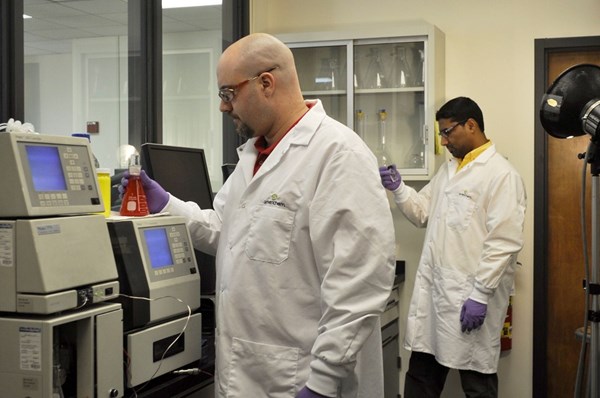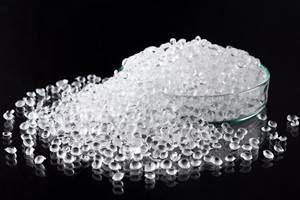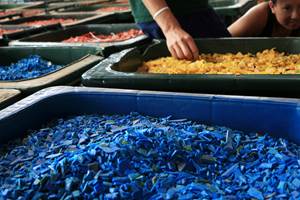A Discussion on the Value of Materials Testing
The top three reasons processors should consider materials testing.
The top three reasons processors should consider materials testing.
I found this brief discussion on how plastics processors can benefit from materials testing, offered to us by Americhem, Cuyahoga Falls, Ohio, extremely interesting. The company, a longtime global masterbatch and additives manufacturer, also made its entry into the plastics compounding business with three important acquisitions over the last four years.
The discussion features two of the company’s key research analytical scientists addressing why many processors are missing out by overlooking the value-added services from their material suppliers.
Pavan Maheswaram and Russ Howard, provide the brainpower behind Americhem’s Analytical and Physical Testing value-engineering services. Their key job: analyze raw materials and their customers’ products to assess quality and provide technical services.
“We spend most of our time developing, improving and implementing analytical testing methods, formulations and manufacturing processes,” says Maheswaram. Adds Howard, “There is a number of reasons we run tests, but we are ultimately providing technical data that customers and other Americhem experts can use to design, improve or otherwise engineer products.”
Their jobs entail doing testing for just about every business unit in the company. “We work with producers of residential and industrial carpets, vehicles and transportation equipment, architectural products, packaging, and specialty products—like nonwovens in dryer sheets. There is plenty of value to be found in taking a closer looks at the composition of your product, regardless of what that may be,” says Howard.
According to Maheswaram, the top three reasons for doing testing are:
Providing customers with documentation to serve as proof of a product’s composition or performance properties;
Troubleshooting—looking for problems or causes of problems with products or processes;
Assessing quality of certain types of products after they’ve been manufactured.
These pros conduct a broad spectrum of tests. With regards to analytical testing, says Maheswaram, thermal analysis is a core competency—whereby they look at how properties of materials change as temperature increases or decreases.
They also do a lot of spectroscopy work—seeing how light reacts with materials, when analyzing a masterbatch, as well as some microscopy when looking at particle sizes, for example. Adds Howard, “We are also focusing more on chromatography lately—separating mixtures to look at proportions of different ingredients to make sure ratios are right or to look for contamination that may have occurred during processing.”
How Long Does Testing Take?
It depends on the application and type of testing, according to these experts. They say the process could range from a few hours to perform some qualitative tests, with other tests taking much longer; generally, tests rarely take more than two weeks to perform, and almost never more than a month.
Greater Interest in Chromatography
A trend they are seeing, according to Maheswaram, is an increased interest in chromatography, as people want to better quantify and analyze the composition of various compounds. “We are also seeing interest in elemental testing super-microscopy, which requires very specialized equipment to carry out.”
Testing Challenges
Asked about testing challenges of which plastics processors should be aware, these pros say it’s important to know that testing methodologies are often proprietary. Says Howard, “If a company doesn’t have knowledge internally about how to conduct certain testing, it can be difficult to look up externally sometimes. You have to develop the tests yourself sometimes, so it isn’t as if someone can just decide one day they are going to conduct a new type of test.”
According to Maheswaram, not everyone has the same expertise. “It takes a lot of time, effort and money to establish certain testing capabilities, which is why we have people all over the world sending things to Americhem’s headquarters for testing.”
Don’t Miss Out
Asked what is the key takeaway from this discussion, Maheswaram advises not to overlook the value of testing—particularly if it is a service an “industry partner” provides at minimal cost.
“There is a lot you can learn from testing that can influence the way you design or improve your products, and you are missing out if you don’t take advantage.” Howard adds that processors should stay in touch with their material suppliers. “We are always looking for ways to expand our capabilities as we work with customers to overcome challenges, so don’t assume you know the full extent of a lab’s testing abilities. They might have changed since the last time you checked.”
For more on Americhem additives and compounds, see PT’s additives and materials database.

Related Content
ICIS Launches: Ask ICIS Generative AI Commodities Assistant
Said to be the first of its kind, this AI assistant will enhance access to ICIS’ intelligence and insights for the energy and chemical markets.
Read MoreProcess Aid Concentrates are PFAS-Free
Wide range of products for cast/blown film and pipe.
Read MoreK 2022 Additives & Materials: Sustainability in the Lead
Nearly all of the new additives highlighted at the big show are aimed at enhancing recyclability of commodity resins and some volume engineering resins such as nylon and PC. A few new materials, on which we had not previously reported, also surfaced at K 2022.
Read MoreAt NPE2024, Follow These Megatrends in Materials and Additives
Offerings range from recycled, biobased, biodegradable and monomaterial structures that enhance recyclability to additives that are more efficient, sustainable and safer to use.
Read MoreRead Next
Beyond Prototypes: 8 Ways the Plastics Industry Is Using 3D Printing
Plastics processors are finding applications for 3D printing around the plant and across the supply chain. Here are 8 examples to look for at NPE2024.
Read MoreMaking the Circular Economy a Reality
Driven by brand owner demands and new worldwide legislation, the entire supply chain is working toward the shift to circularity, with some evidence the circular economy has already begun.
Read More























